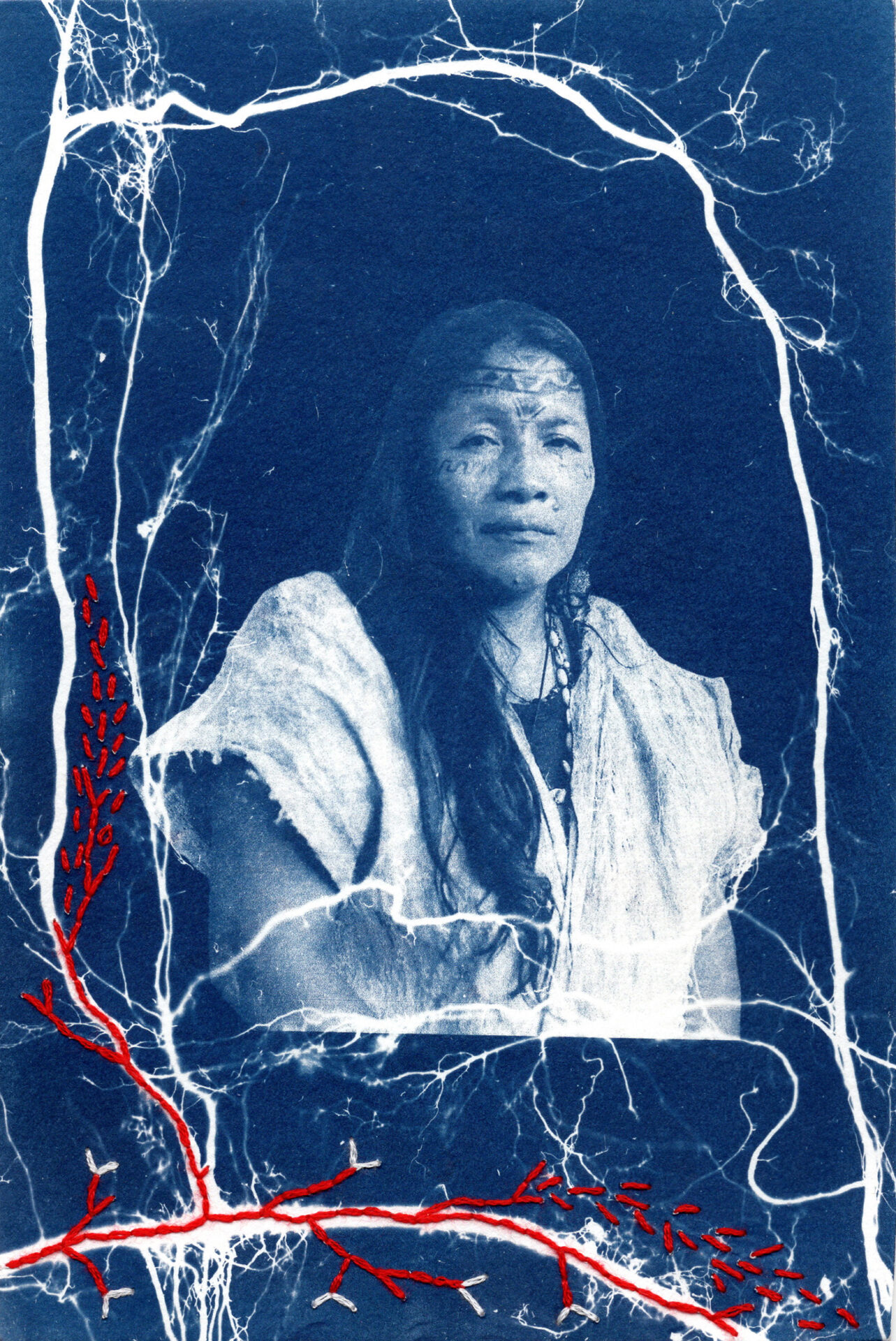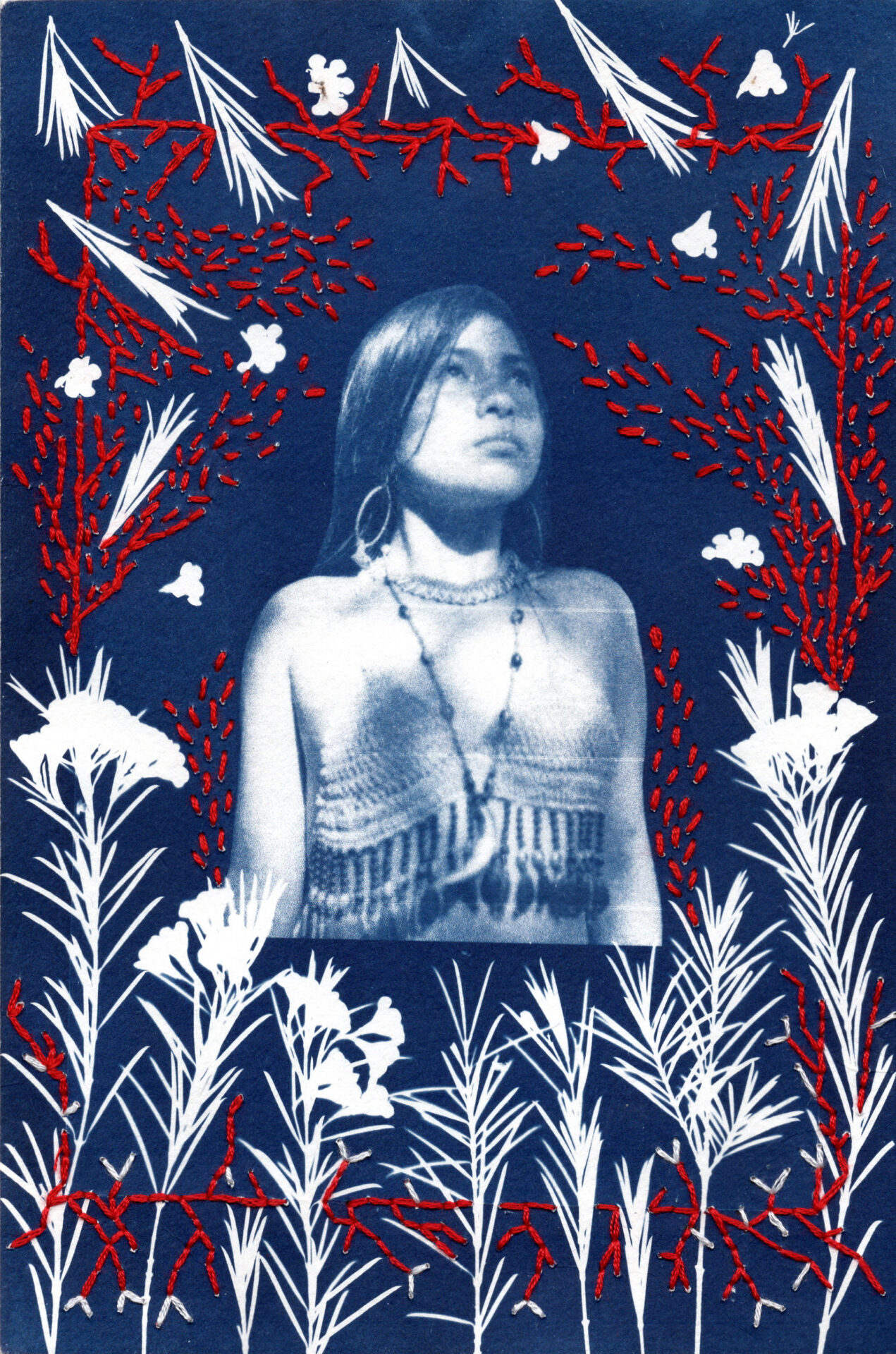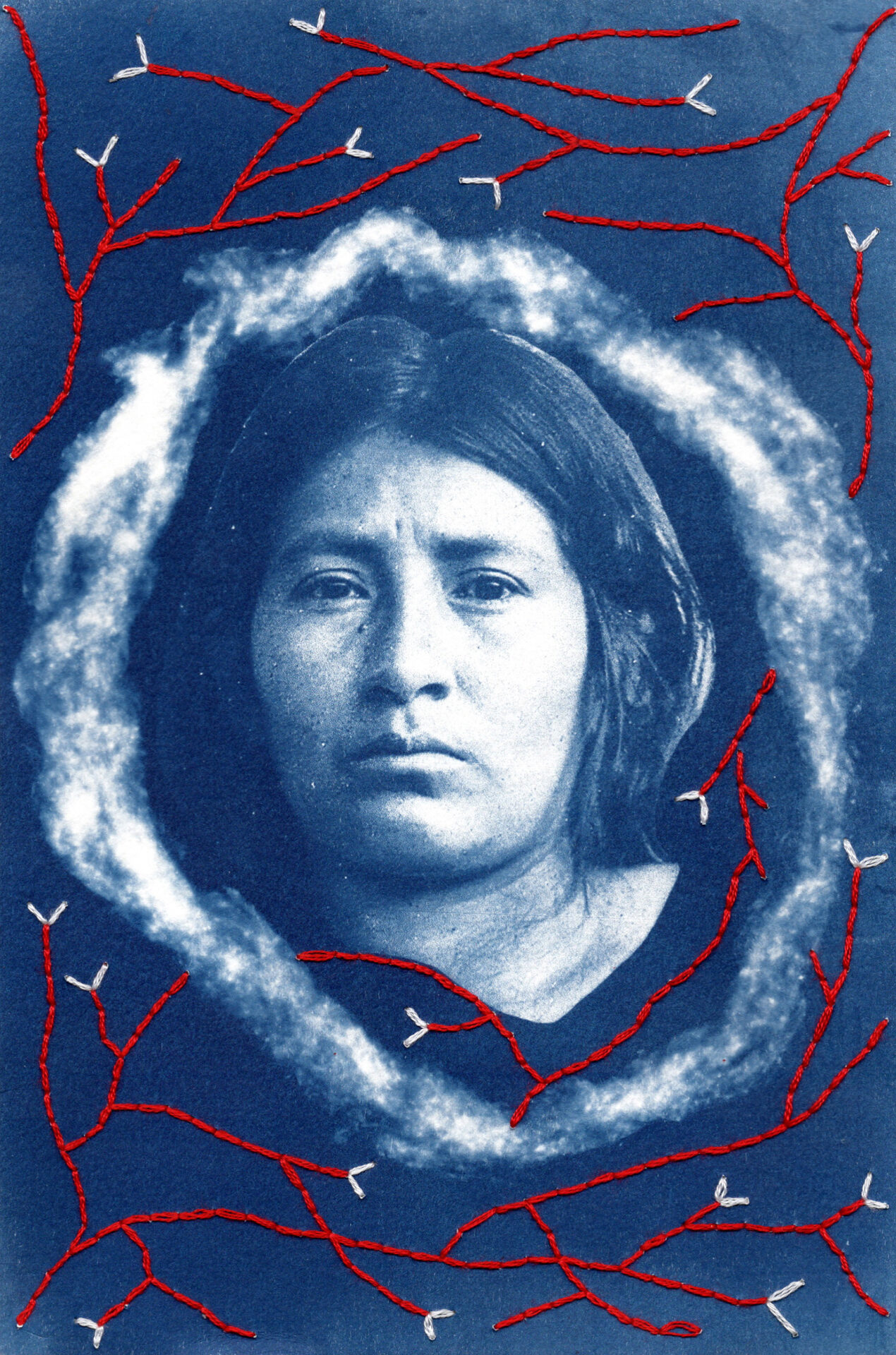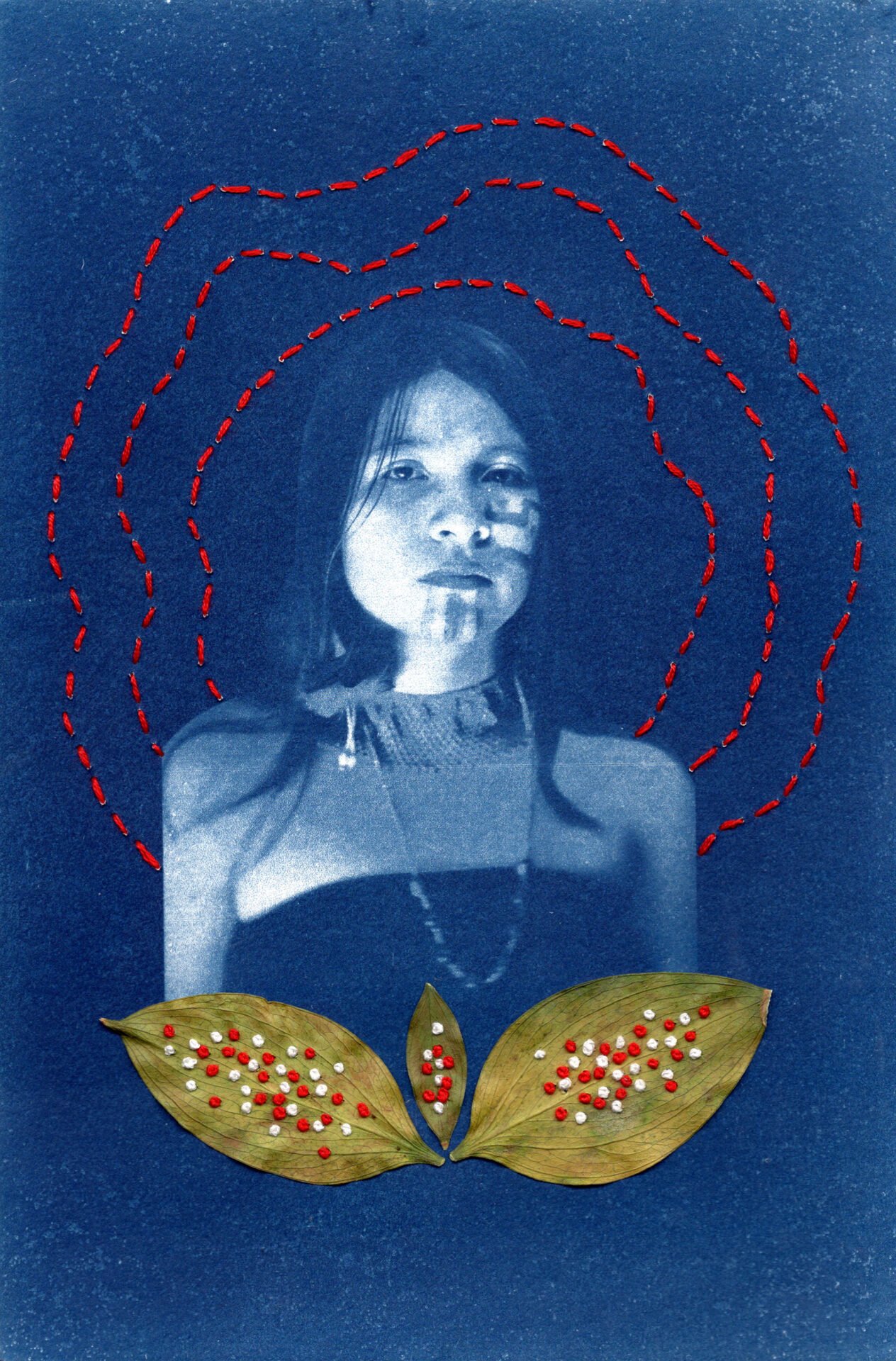NEXT
Ñuka ñawita tapani
Cierro mis ojos
I close my eyes
Panga Tukuni
Me transformo en hoja
I transform myself in a leaf
Waira urmachiguan
El viento me hace caer
The wind makes me fall
Allpa shunguluan ullariguan
La tierra me abraza con su corazón
The Earth hugs me with her heart.
-Poem by Mukutsawa Montahuano
In the same way that stories develop and unfold in the material world, dreams can access past memories creating a collective essence that is traced by the body.
Ancestral Sapara teachings of witsa ikichanu (good living) mean to maintain an open connection to the spirit world through dreams. For Sapara people, place is important, not only in the construction of their identities and their understanding of the world, but also in their everyday interaction with the forest.
Indigenous people protect more than 80% of biodiversity in the world. Yet, the problem with extractivism in Sapara territory continues to be present due to the different forms of oppression and the ‘network of dualisms,’ which is connected to the problematic features of the west’s treatment of nature that underlie the environmental crisis, especially the western construction of human identity as ‘outside’ nature (Plumwood 2003).
Drawing my fieldwork from the Sapara Nation in the Llanchamacocha community located in the Providence of Pastaza in the Ecuadorian Amazon, this research-based project explores Indigenous Sapara women’s local pursuits of ecological well-being and the symbolic relationships between Sapara women, the land and dreams. Dealing with notions of trans-corporeality and intersectionality to address the multiple relationships Sapara women have with the forest. My research engaged with body-territory discourses and the local concepts of place-based perspectives that highlight the idea that the body is also considered a place of resistance. Principally because of how extractivism is rooted in the colonial dynamic of oppression and domination over women and nature.
Between Dreams and Naku is an ongoing experimental research project that combines cyanotype photography, embroidery and video. The work poses a reflexion about connectedness and destruction. Embroidery allows the researcher to create or reconstruct her own interpretations of the collective weaving Sapara women share with the land. Each stitch is seen as a metaphor for liberation. A way to untie the norms of oppression by embroidering new narratives. In these series of cyanotypes, weaving becomes a mending ritual with the intention of embracing the ancestral roots that connect us all.
NAKU means forest.
To be Sapara is to be a man or a women from the forest, the caretakers of the forest. Naku is not only a physical place, but a living world constituted by many spirit beings, human and non-human. These spirit beings are able to communicate through a semiotic process wherein other than human beings such as animals, landforms, rivers, rocks, trees carry out thoughts and agency.
WITSA IKICHANU means Good Living
Witsa Ikichanu encompasses three energies, forest, water and wind. These energies are primordial in order to maintain a balanced relationship with the land and an open communication to the spirit world through dreams.
The Sapara believe that the understanding of the world -Naku is influenced by the wellbeing of the land and their daily engagement of the spirits of the forest through dreams. Place is endowed with significance. A destroy land means losing access to dreamtime. As a consequence, women’s waking life actions, women bodies and their spiritual wellbeing would be threatened by outside forces.
PAJU means energy
Pajus (energies) are passed from generation to generation. This concept is referred as Unantsay meaning that the current Sapara generations live accordingly to their grandparents teachings. In the same manner, their grandparents lived according to their ancestors’ teachings, and so on.
KUSMUY means dreams
“Through dreams we maintain a healthy relationship with the land and the spirits that inhabit the forest -Naku.”
– Bety Grefa
For Sapara people dreaming is considered a privileged entrance to ancestral knowledge, to know how to dream is to understand a language of symbols were representations are based on their interpretative process of the self, body and spirit through corporeal and oneiric experiences.
Q&A
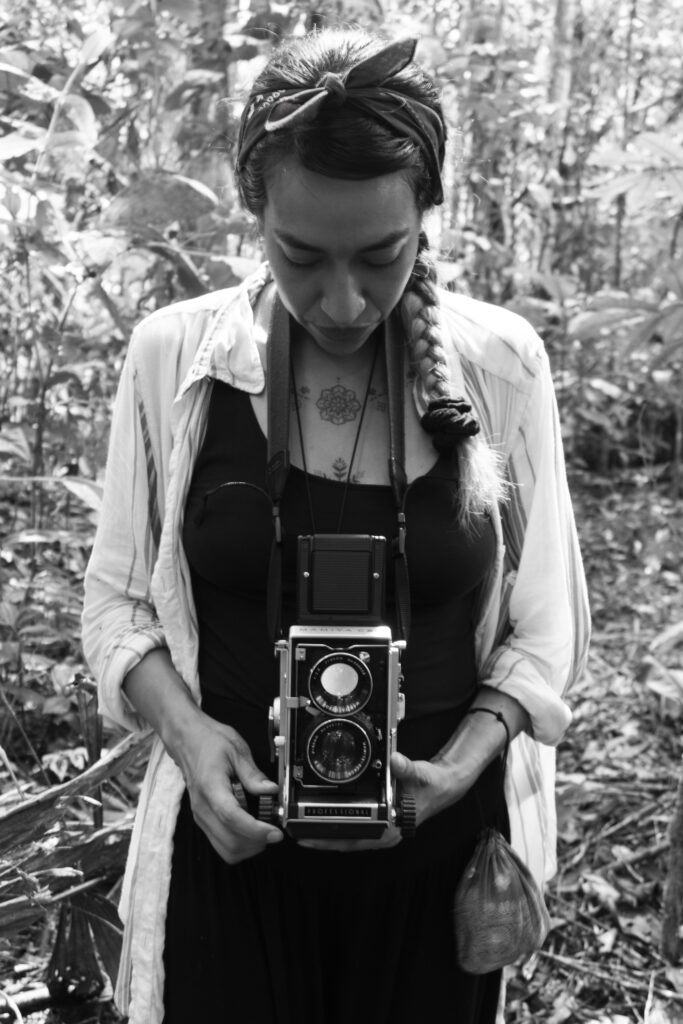
Tatiana is an Ecuadorian visual – artist – anthropologist – storyteller whose work is rooted in her constant meditative journey of self-discovering, connecting to and understanding the land that sustains all humans. Her work focuses on the role place and memory play in the construction and deconstruction of identity by incorporating the body as a medium of expression or, as an analogy to territory. Through the MA in Visual and Media Anthropology at Freie Universität Berlin, Tatiana has been exploring practice-led research that combines participatory and sensory ethnography as her main methods of representation. Her research interests include indigenous people’s animistic practices, body-territory relations in connection to indigeneity, and the study of human and non-human relations through dreams.

